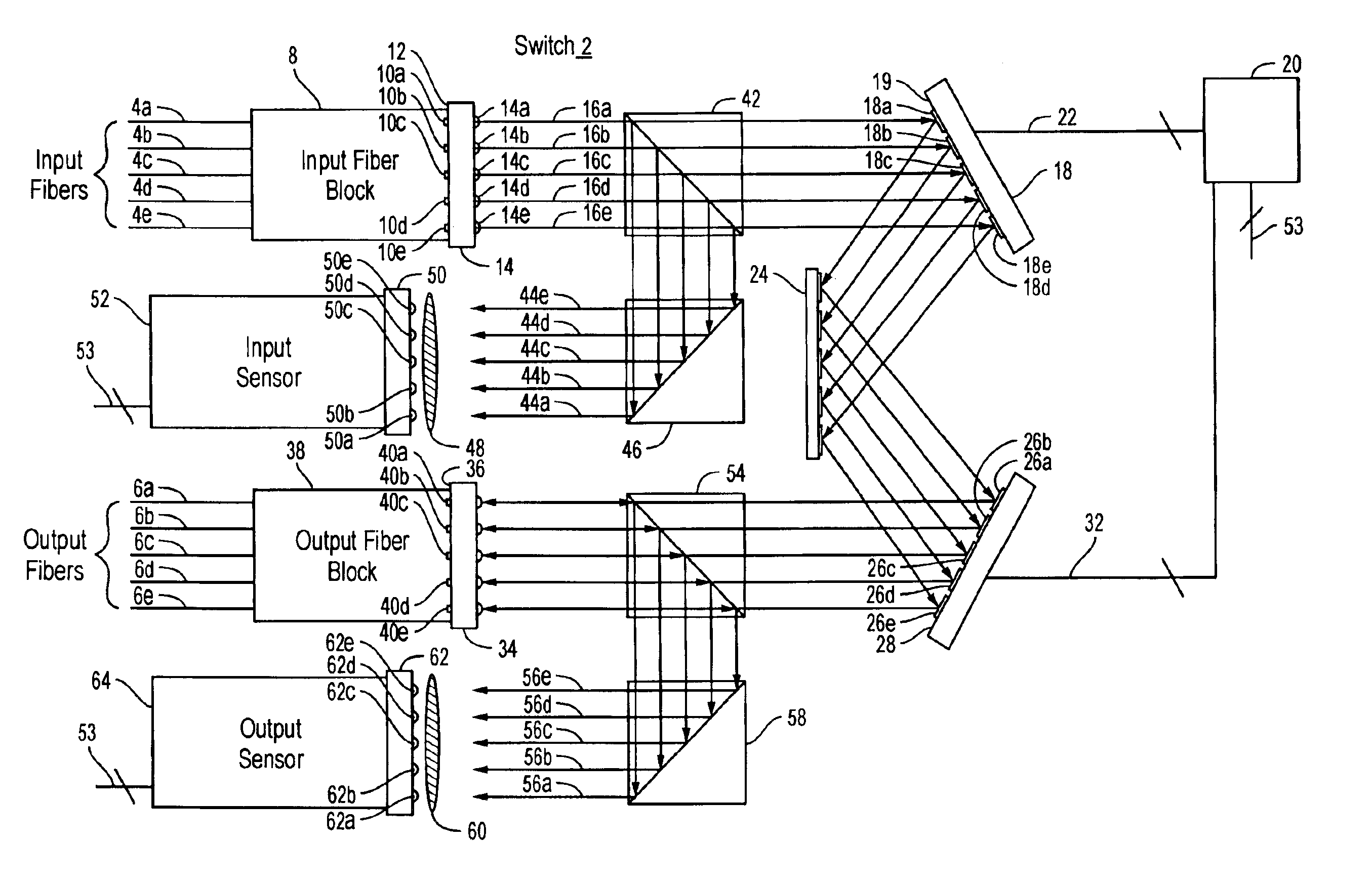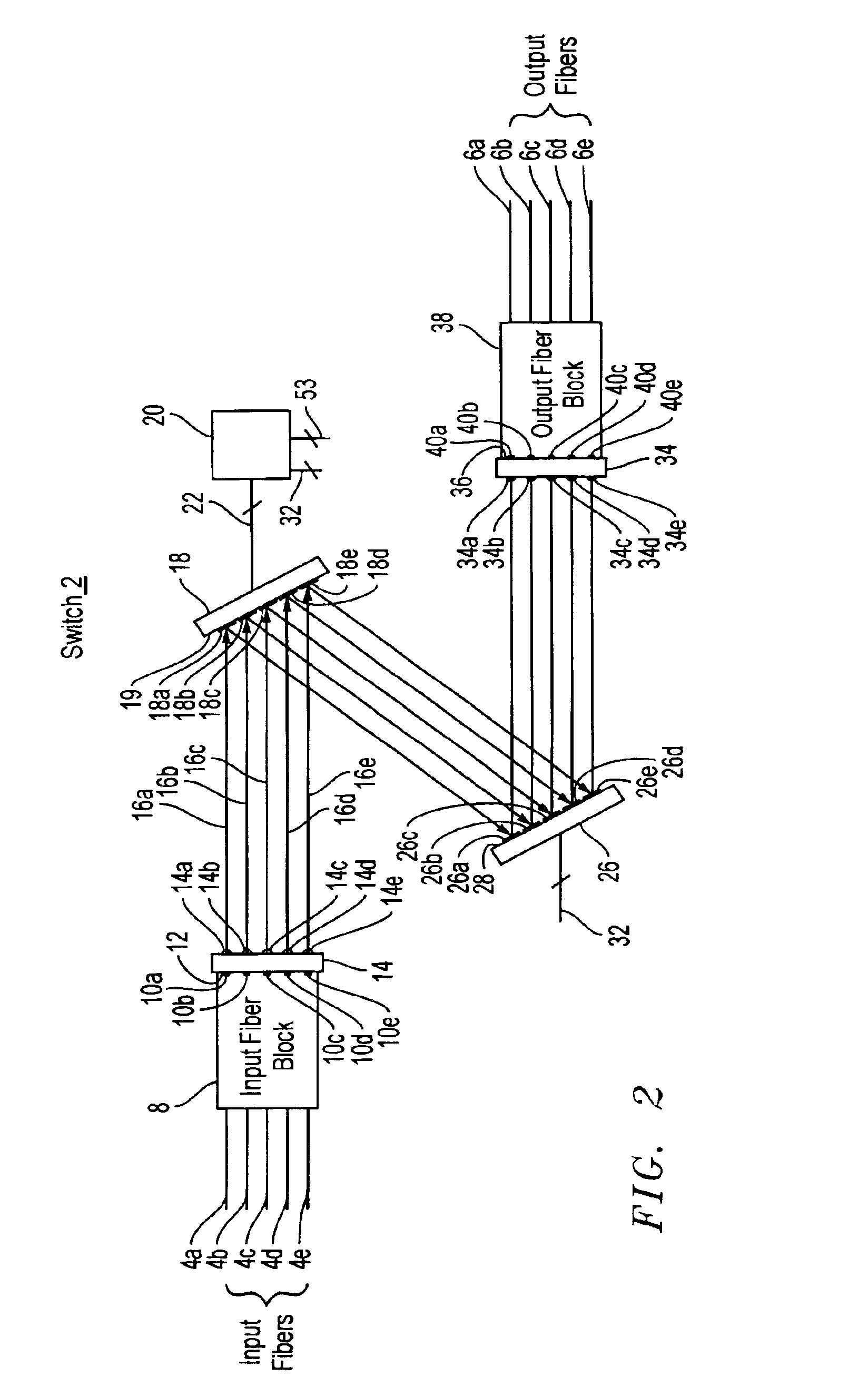Optical configuration for optical fiber switch
- Summary
- Abstract
- Description
- Claims
- Application Information
AI Technical Summary
Benefits of technology
Problems solved by technology
Method used
Image
Examples
Embodiment Construction
[0036]An optical fiber cross-connect switch in accordance with embodiments of the present invention routes light input through any one of N input ports to any one of P output ports. In a typical optical path through a switch, light entering the switch through an input port is incident on a corresponding first micro-mechanical mirror in a first two dimensional array of micro-mechanical mirrors. The first micro-mechanical mirror, which can be oriented in a range of arbitrary directions (dθ,dφ), is tilted to direct the light to a second micro-mechanical mirror in a second two dimensional array of micro-mechanical mirrors. The second micro-mechanical mirror, which can also be oriented in a range of arbitrary directions (dθ,dφ), is tilted to direct the light to a corresponding output port and hence out of the switch.
[0037]The light may be switched from the output port to which it is initially directed to another output port by reorienting the first micro-mechanical mirror to direct the l...
PUM
 Login to View More
Login to View More Abstract
Description
Claims
Application Information
 Login to View More
Login to View More - R&D
- Intellectual Property
- Life Sciences
- Materials
- Tech Scout
- Unparalleled Data Quality
- Higher Quality Content
- 60% Fewer Hallucinations
Browse by: Latest US Patents, China's latest patents, Technical Efficacy Thesaurus, Application Domain, Technology Topic, Popular Technical Reports.
© 2025 PatSnap. All rights reserved.Legal|Privacy policy|Modern Slavery Act Transparency Statement|Sitemap|About US| Contact US: help@patsnap.com



